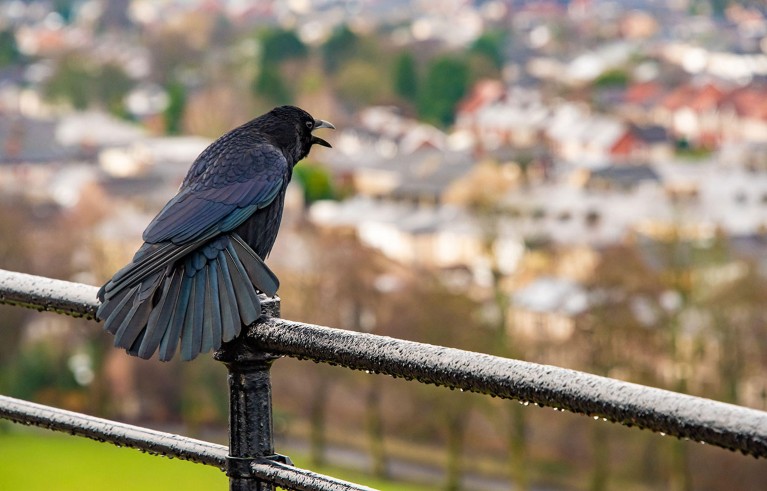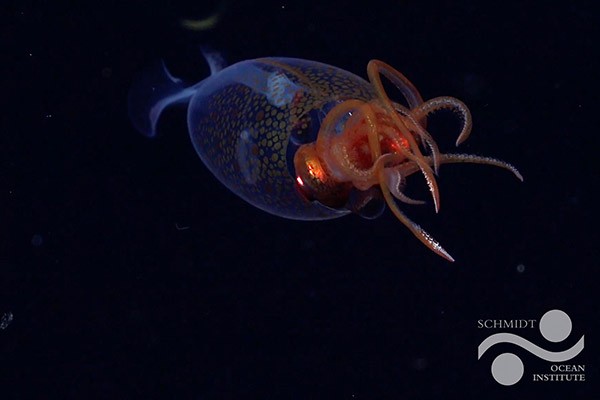You have full access to this article via your institution.
Hello Nature readers, would you like to get this Briefing in your inbox free every day? Sign up here.

Crows have dazzled scientists with their ability to count their calls.Credit: John Eveson/Alamy
Carrion crows (Corvus corone) can add geometry to their already impressive list of mathematical skills. Researchers showed sets of six shapes to two crows and tasked them with spotting the odd one out. The birds aced simple tests, picking a crescent moon from a group of stars with little trouble. Even on more difficult tasks — picking out one slightly distorted quadrilateral from a group of otherwise very similar regular shapes — the crows still performed well, even when the shapes were randomly rotated and scaled.
Reference: Science Advances paper
Members of the World Health Organization have finalized the first global pandemic accord — a series of measures to prevent, prepare for and respond to pandemics. The treaty — three years in the making — lays out the broad outline of a ‘pathogen access and benefit sharing’ system, which grants pharmaceutical companies access to scientific data such as pathogen samples in return for more equitable sharing of drugs, vaccines and diagnostics during a pandemic. The accord was agreed without the United States, which withdrew the day that President Trump was inaugurated.
The US Food and Drug Administration has green-lit the first trial to test whether genetically modified pig livers can be safely used to treat people with organ failure. As part of the trial, people with severe liver failure who are ineligible to receive a human organ will be temporarily connected to an external pig liver that will filter harmful waste products from their blood. The initial phase of the trial will include four individuals, who will each be connected to a pig liver for 72 hours over a 2-week period, then monitored for a year.
Image of the week

For the first time ever, scientists have caught a colossal squid (Mesonychoteuthis hamiltoni) on camera in its natural habitat. The individual is only a baby, measuring just 30 centimetres long. It will become opaque as it grows into its 7-metre-long adult body, but not much else is known about the elusive species. A remote vehicle spotted the creature at a depth of 600 metres in the South Atlantic Ocean. (Science | 4 min read) (Schmidt Ocean Institute)
Features & opinion
After decades of unsuccessful attempts, two drugs that target the amyloid-β protein — lecanemab and donanemab — can now slow the cognitive decline associated with Alzheimer’s disease. But despite their success, not all Alzheimer’s researchers agree that these candidates are the best way forward. Some argue that the drugs aren’t effective enough to justify the high cost and risk of side effects. Others question whether clearing amyloid-β plaques is the right avenue to pursue at all. “It might be the thin end of the wedge, or it might be as good as we’re going to get,” says neurogeneticist David Rubinsztein. “Frankly, I don’t think we know.”
This editorially independent article is part of Nature Outlook: Alzheimer’s disease, a supplement produced with financial support from Lilly.
For Gauthier Weissbart, psychological challenges such as uncertainty and self-doubt were more difficult to overcome than the technical or scientific issues he faced during his PhD programme in biophysics. He’s sharing six top tips for getting through a PhD “not only as a researcher, but as a human being”:
1. Embrace uncertainty — it fuels curiosity
2. Balance thinking with doing
3. Stop striving for perfection
4. Argue respectfully and listen attentively
5. Take breaks
6. Find meaning outside of work
The culture of overhype in quantum technology must be challenged before investors lose faith in its promise, says Joan Arrow, founder of the Quantum Ethics Project. Researchers, institutions, companies and governments must demystify the quantum field to ensure that fact and fiction are clearly separated. They must also give a clear sense of what new quantum chips can — and can’t — do, in terms that make sense to potential customers. “By creating a culture of accessible science communication and by pointing out corporate overhype, we can begin to develop and invest in quantum technologies responsibly,” Arrow writes.
Today I’ve got my eye on Den stora älgvandringen, roughly ‘the Great Moose Migration’ in English. Every year since 2019, Sweden’s public broadcaster SVT has livestreamed some of the nation’s population of moose (Alces alces) crossing the Ångerman River during their annual migration. Before any of you tune in expecting high-octane action, a word of warning. The livestream is a marathon, not a sprint, as the moose travel slowly and in small groups.
While I settle in with my popcorn, why not send your feedback on this newsletter to [email protected].
Thanks for reading,
Jacob Smith, associate editor, Nature Briefing
Want more? Sign up to our other free Nature Briefing newsletters:
• Nature Briefing: Careers — insights, advice and award-winning journalism to help you optimize your working life
• Nature Briefing: Microbiology — the most abundant living entities on our planet — microorganisms — and the role they play in health, the environment and food systems
• Nature Briefing: Anthropocene — climate change, biodiversity, sustainability and geoengineering
• Nature Briefing: AI & Robotics — 100% written by humans, of course
• Nature Briefing: Cancer — a weekly newsletter written with cancer researchers in mind
• Nature Briefing: Translational Research — covers biotechnology, drug discovery and pharma


